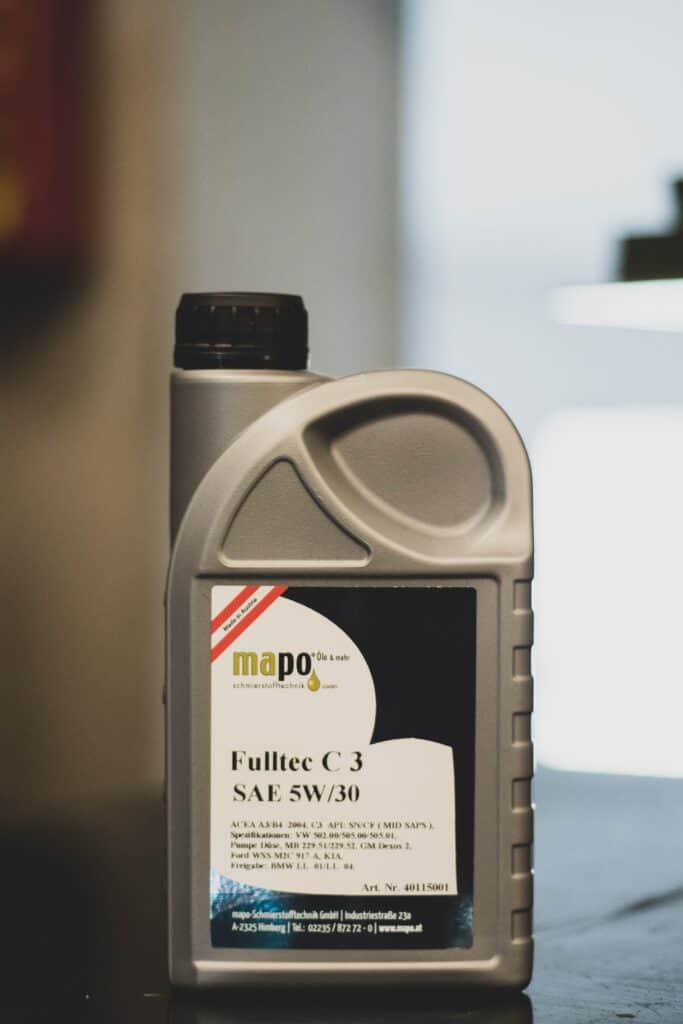As an Amazon Associate we earn from qualifying purchases.
Motor oils are crucial lubricants that can suppress the wear and tear of engine parts. Moreover, they also reduce friction while the engine is in motion. Hence, the gliding surfaces and parts within the engine get the required lubrication to enhance the engine’s life.
The motor oils such as 0w30 and 5w30 combine base oils consisting of petroleum-based hydrocarbons, such as hydrogen and carbon. However, to get into the details of these two oils, we need to have a generalized idea about their specifications.
0w30 vs 5w30
When you are talking about motor oils, the best in the series are 0w30 and 5w30. It is because their viscosity levels are quite optimal for vehicles of all types, running in all seasons.
Therefore, they both are considered the best in the lot. However, they still do have certain differences that define their usage. So, if you are in a conflict to decide upon what to choose, refer to this 0w30 vs 5w30 article.
0w30 Specifications
0w30 is compared with most other motor oil types because of its low viscosity, which makes it stand out among all. It is an ideal pick and considerably better than 10w30 and 5w30 motor oils in all ways. It is because the viscosity for low temperatures is best with 0w30 compared to all other existing motor oil blends.

0w30 is highly preferable motor oil for the Asian, European, and American Automobile manufacturers. It is because opting for less viscous oil over the usual ones will make the vehicles run smoothly in frigid weather as well.
0w30 is synthetic type motor oil that has the capability of enhancing & improving the fuel economy. Also, lubrication with a smooth flow will impose a lesser load upon the overall engine functionality.
Hence, it will reduce the consumption of fuel to generate power. Thus, there will be an improvement in fuel economy.
It also has low friction aspects that help keep the engine safe during constant running. Hence, this motor oil has the potential to surpass all other conventional oils, with its high-potential oxidation and thermal stability. Also, the component balance is ideal within this oil mixture, and the temperature requirement is also low for the same.
The numbers presented over the name of this oil, 0w30, intends to explain its viscosity and thickness. The first number, ‘0,’ indicates the viscosity of this motor oil at winter temperatures. And, the second number, ’30,’ indicates the oil viscosity at high or operating temperatures.
5w30 Specifications
5w30 is definitely a high viscosity oil type in comparison to 0w30. But, it is still an ideal pick, as there is a very subtle difference in terms of functionality between 0 and 5 ratings for low-temperature viscosity.
It is a perfect pick in comparison to 10w30 or 10w40. It is preferable for most vehicle types, including SUVs, trucks, light vans, and passenger cars.
The high viscosity attribute of this oil makes it quite suitable for turbo-charged and super-charged engines. It is because such engines require ideal heat-up for an efficient pump!
5w30 motor oil has the potential to reduce the drag in engines and protect the crucial parts such as valvetrain, crankshaft, pistons, and others. Moreover, it is also significant in boosting the fuel economy of the vehicle.
The additives within this oil play a major role in inhibiting the corrosion effects and clean the engine deposits to keep away the rust. Moreover, these additives also prevent the oil from being adversely affected due to high temperatures or oxidation.
5w30 is thick motor oil and is quite preferable when it comes to vehicles operating in hot regions. Apart from that, this motor oil is also ideal for vehicles that are used for long-route commutes because long rides generally heat the engine. It is ideal for picking synthetic oil over regular ones because the flow is better in pure and blend synthetic oils.
0w30 vs 5w30
Similarities
- The high temperature or operating temperature viscosity is the same in both these oils.
- Both are thick motor oils that are preferable for cold climates.
- Both oils help boost the fuel economy in vehicles.

Differences
- The range of temperature for 0w30 is -40 to 86 degrees Celsius. And, the temperature range suitable for 5w30 is -31 to 86 degrees Celsius.
- 0w30 is preferable for extremely cold and winter, whereas 5w30 is mostly preferable for fall and winter seasons.
- 0w30 offers faster flow at initial start-up to help the oil reach out to different engine parts. However, the flow in 5w30 is a bit less efficient in comparison to 0w30.
- 0w30 offers both oxidation and thermal stability, whereas 5w30 is best at offering only thermal stability.
Major Distinguishing Factors
The primary distinguishing factor between the 0w30 and 5w30 motor oil is that they have varying viscosity indexes. For example, the viscosity index for 0w30 is 167, whereas it is 154 for the 5w30 motor oil. Therefore, it is concluded that 0w30 has a very low viscosity, whereas 5w30 has a slightly higher figure.
When to Use 0w30?
0w30 oil is ideally preferable for winter climates. And the manufacturers will also recommend you to use the same during the winter days, as it will seamlessly warm up the engine parts.
When to Use 5w30?
In contrast, while 5w20 is good for cold temperatures, 5w30 is suitable motor oil for high-temperature conditions compared to 0w30. And if you already have 0w30 in your vehicle, when the summer hits in, consider replacing it with 5w30.
Even though both have almost the same specifications, it is better to go with 5w30 for higher temperature vehicle operations.
Final Verdict
Deciding among these two oils depends upon the requirements of the rider. However, temperature, viscosity, and synthetic or regular oil might be the factors to consider while choosing the best oil for your vehicle. Hence, check out the specifications of your car and these two oils to ensure that you get the best lubricant.

